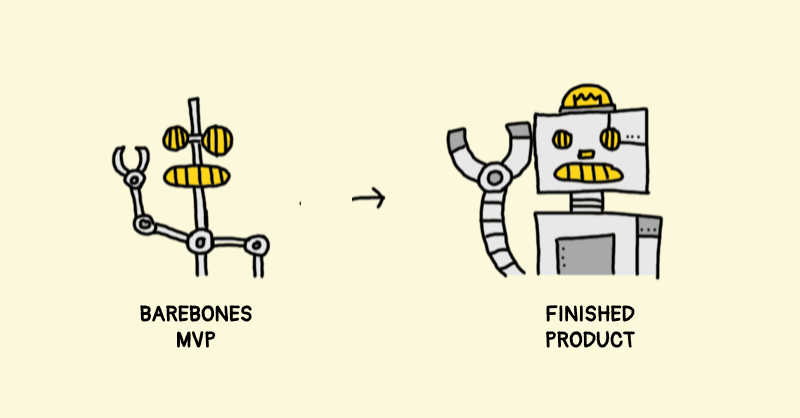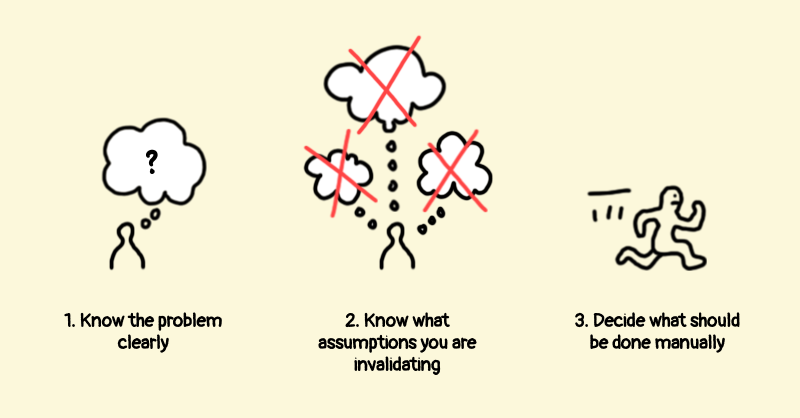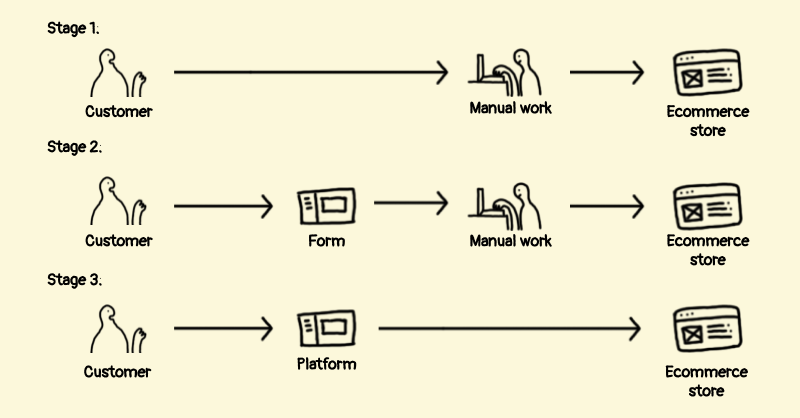The Minimum Viable Product (MVP)

What is an Minimum Viable Product (MVP)?
Eric Ries, first defined an MVP as that version of a new product which allows a team to collect the maximum amount of validated learning about customers with the least effort.
In the case of Eris Ries’s definition, an MVP could be a landing page and a simple Facebook Ad campaign costing using a minimal budget. This would allow you as a founder/ product builder to know within the span of the campaign if there is existing demand for the product concept.
However, the conventional sense of an MVP has now evolved to encompass usability of the initial product - much more than just a fake-door test.
By definition, a minimum viable product (MVP) is a version of a product with just enough features to be usable by early customers who can then provide feedback for future product development.
This serves as a gauge of the culturally accepted concept of an MVP to be something which customers can provide feedback on instead of just testing demand.
Given that, we will be focusing on the new cultural definition of an MVP - a product which has just enough functionality to allow users to use the product as intended. This allows them to provide feedback on which areas need improvement.
What is minimum and viable?
The MVP is supposed to be the barebones version of your product which is able to satisfy the needs of few people of the earliest adopters of your market.
The key concept to MVP development is to release it quickly so that you are able to start challenging built in assumptions about your product and market. This requires a balancing act between providing the functionality in solving the problem and releasing your product to the market.
In order to successfully pull off an MVP, you need 3 things:
- A clear understanding of the problem you are trying to solve.
- A clear understanding of the what assumptions you are looking to invalidate
- The ability to ruthlessly decide which aspects of the solution you can provide manually without changing the experience.

The key is to try to invalidate as many assumptions as you can while providing the intended experience as much as possible.
Example of applying the framework: The concept of Shopify
In the case of Shopify, let us apply this framework.
The problem: People without code experience wanted to create and maintain ecommerce stores easily and would be willing to pay a monthly subscription for this.
The first two biggest assumptions:
- People are willing to pay to build ecommerce stores
- People are willing to pay a monthly subscription
In order to lower the amount of risk, I would start with an agency building ecommerce stores for a monthly subscription plan.
After these two assumptions have been proven to be true, I would then focus on the next few assumptions:
- People wish to update the ecommerce store themselves if they have the channel to do so.
I would then implement an online form which allows users to update their inventory, add new items or make small design tweaks.
Once they have proven that they use the form often or request for such changes often, I would then build a system for them to do so themselves.
At this point, we would not only have lowered the risk of building unnecessary features as we know that customers would use it, we would also know exactly what aspects are constantly updated and what fields need to be included.

Example of MVPs by large companies
- Amazon: every time they got an order, they proceeded to order it from a distributor at wholesale prices - “When a customer bought a book, Amazon ordered it, the book would arrive within a few days, and Amazon would store it in the basement and then ship it off to the customer.” - The Everything Store
- Doordash: It started as a concierge service where the founders would receive calls on their phone and then proceed to make the deliveries themselves - without some of the restaurants even knowing.
Derivatives
The concept of the MVP has spun off several derivatives which aim to add more nuance to the concept of the MVP. These derivatives include:
- The Minimum Marketable product (MMP)
- The Minimum Lovable product (MLP)
Conclusion
The MVP can be a very powerful tool in the hands of a founder. However, it depends on the clarity of thought around the true problem which the customer is solving and building a hypothesis of the assumptions which you, as a founder, are trying to invalidate.
I hope this helped you in some way or form. If you'd like to have the next issue of Startup Illustrated delivered to your inbox, do subscribe to our newsletter. You can also follow the Startup Illustrated Twitter account @StartupIllustr. If you'd just like to say hi, just drop me a DM on Twitter @foundbryan.
Until next week, I wish you all the best!


